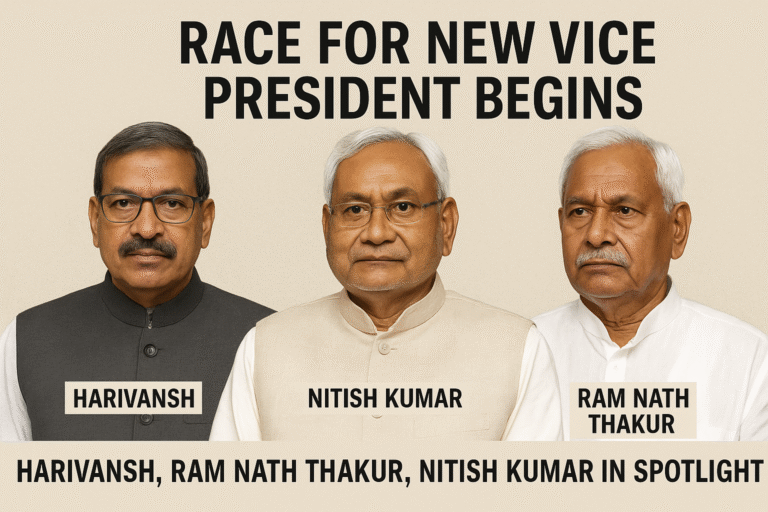
Following Jagdeep Dhankhar’s sudden resignation as Vice President of India, political corridors are abuzz with speculation over who will succeed him. Prominent leaders like Harivansh Narayan Singh, Ram Nath Thakur, and Nitish Kumar have emerged as potential contenders for the prestigious constitutional role.
The Election Commission of India officially confirmed on July 23 that it has initiated the process to elect the next Vice President. This announcement came just days after Dhankhar, 74, stepped down from the office citing health reasons. Though his term was due to end in 2027, his departure has created an urgent vacancy, and a new Vice President is expected to be chosen by the end of August.
Potential Candidates in the Fray
Harivansh Narayan Singh, currently the Deputy Chairman of the Rajya Sabha and a JD(U) MP, is seen as a strong contender. Known for his parliamentary experience and leadership in the Upper House, Harivansh has temporarily been presiding over Rajya Sabha proceedings in the absence of a Vice President.
Ram Nath Thakur, Minister of State for Agriculture and son of the late Bharat Ratna Karpoori Thakur, is also being considered. His candidacy holds political significance, especially in Bihar, as he represents the ‘ati-pichhara’ (extremely backward) Nai community. Reports suggest that BJP President JP Nadda recently met with Thakur, further fueling speculation about his nomination.
Meanwhile, Nitish Kumar, the current Chief Minister of Bihar and JD(U) leader, is another name being floated. However, his elevation to Vice President would require him to step down from his CM post, a move that appears unlikely so close to the Bihar Assembly elections.
Election Dynamics Favor NDA
The upcoming Vice Presidential election will follow a proportional representation system through a single transferable vote by secret ballot. The electoral college consists of members from both the Lok Sabha and Rajya Sabha, totaling 788 MPs.
With an effective strength of 782 MPs currently, a winning candidate needs at least 392 votes. The BJP-led NDA is comfortably placed with an estimated 422 supporting MPs across both Houses — 293 in the Lok Sabha and 129 in the Rajya Sabha, including allies and nominated members. This gives the NDA a clear numerical edge in selecting the next Vice President.
Strategic Considerations
With the BJP also preparing for a change in party leadership, as JP Nadda’s term comes to an end, the timing of Dhankhar’s resignation adds another layer of complexity to the ongoing political developments. The final choice for Vice President will likely be influenced by electoral strategy, social representation, and internal party dynamics.
As the nation awaits the official poll schedule, political observers are closely watching for signs of consensus or contest in the selection of India’s next Vice President.